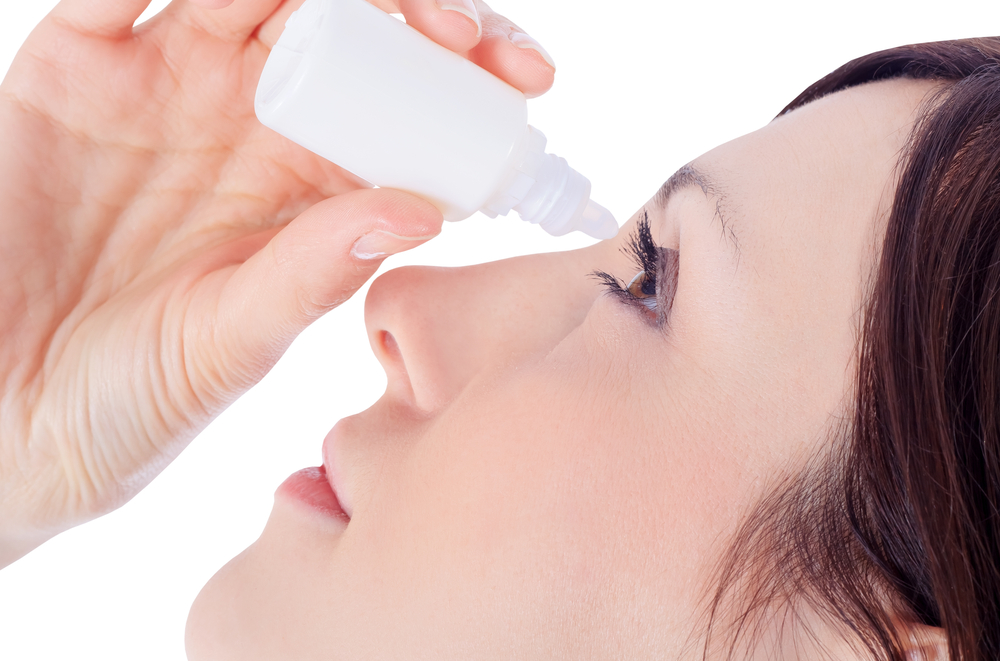DNase-containing Eye Drops Show Promise for Relieving Dry Eyes in Sjögren’s Patients, Early Data Suggests

Eye drops that contain a DNA-degrading enzyme are safe and potentially effective against eye damage and discomfort in people with dry eye disease, such as those who have Sjögren’s syndrome, early data from a Phase 1/2 trial show.
The findings were reported in the article “A Phase I/II Placebo-Controlled Randomized Pilot Clinical Trial of Recombinant Deoxyribonuclease (DNase) Eye Drops Use in Patients With Dry Eye Disease” and published in the journal Translational Vision Science & Technology.
In people with dry eye disease, the production of tears can be severely impaired, and the cornea (the transparent outermost layer of the eye) can become inflamed to the point of disabling eye pain and light sensitivity.
People with Sjögren’s syndrome are commonly affected by this condition as their immune system mistakenly attacks the glands that make tears and saliva, as well as other organs.
“The burden of severe dry eye is much greater than just having an occasional feeling of dryness,” Sandeep Jain, MD, professor at the University of Illinois at Chicago College of Medicine and principal investigator of the clinical trial, said in a press release.
“It can severely compromise quality of life to the point of disability and can compromise a person’s vision. There are currently only two approved drugs to treat dry eye, and they don’t work for everyone, especially those with severe disease, so having a new drug that can treat the disease is very important,” he added.
Jain’s lab was the first to discover that neutrophils, a type of white blood cells, gather on the surface of the eyes of people with dry eye disease, especially in those unable to produce enough tears.
He and his colleagues found that neutrophils on the eye surface release portions of chromatin, which are DNA-protein complexes responsible for packing the cell’s genetic material.
These DNA strands are shed as web-like structures called neutrophil extracellular traps (NETs) on top of the cornea, causing an inflammatory response that further irritates the eye.
Although NETs are part of our natural immune defenses, they can “cause inflammation of the ocular surface and attract additional neutrophils in a vicious cycle,” Jain noted.
The data suggested that people who produce an insufficient amounts of tears — tears are important to keep the eye wet, clean, and healthy — accumulated more NETs, which seemed to contribute to their eye damage.
Therefore, the researchers thought of a new therapeutic approach for people with dry eye disease who have tear deficiency — an eye drop formulation that contains DNase, which is an enzyme that selectively breaks up DNA.
The enzyme is an approved mucolytic for the management of cystic fibrosis, and is sold as Pulmozyme by Genentech. Its NET-degrading effects thin mucus in the airways and help reduce inflammation in these patients.
The researchers believed that treating dry eyes with small amounts of DNase could also be a therapeutic strategy to clear NETs from the eyes of tear-deficient people.
To assess the safety and preliminary efficacy of this approach, they conducted a Phase 1/2 trial (NCT02193490) in people who have dry eye disease associated with tear deficiency. This trial is still ongoing and recruiting patients.
The results reported refer to 47 enrolled participants who were randomly assigned to one of two groups: in one group, patients applied DNase (0.1%) eye drops to both eyes four times a day for eight weeks; in the other group, participants were given a placebo.
The participants had a diagnosis of Sjogren’s syndrome (53% of patients), non-Sjogren’s dry eye disease (30% of patients), and ocular graft-versus-host disease (17% of patients).
A total of 41 patients completed the trial. Six patients dropped out of the study due to preference for contact lens and other standard treatments.
The researchers evaluated the patients’ signs and symptoms through questionnaires and measured the degree of cornea damage and amount of DNA webs and other pro-inflammatory material on the eye’s surface.
At eight weeks, the participants receiving DNase eye drops had a significant and clinically meaningful reduction in corneal damage compared with the placebo group.
Those using the eye drops also had less DNA webs and other debris material (shedded cells, neutrophils, and NETs) linked with inflammation over the surface of their eyes.
Moreover, the patients who used the DNase eye drops also reported a relief in dry eye symptoms and discomfort compared with the placebo group.
The response to treatment was similar across patient groups, suggesting that DNase treatment “is likely to benefit tear-deficient DED [dry eye disease] subtypes, despite different [origins],” the researchers wrote.
In terms of safety, the eye drops were well-tolerated and the presence of adverse events was similar for placebo and DNase groups. In the DNase eye drops group, the most common events were burning (in 20% of patients) and grittiness (16%).
Clinical examinations revealed that the patients had no treatment-related eye inflammation, cataract development, or worsening intraocular pressure.
As the production of NETs increases in more severe cases of eye dryness, the “use of DNase eye drops is also likely to be most relevant to patients with moderate to severe tear deficient DED,” the researchers said.
“The data from this early clinical trial suggests that DNase eye drops may be safe and effective for treating severe dry eye, and we look forward to conducting larger randomized trials to definitively prove its efficacy,” Jain said.






